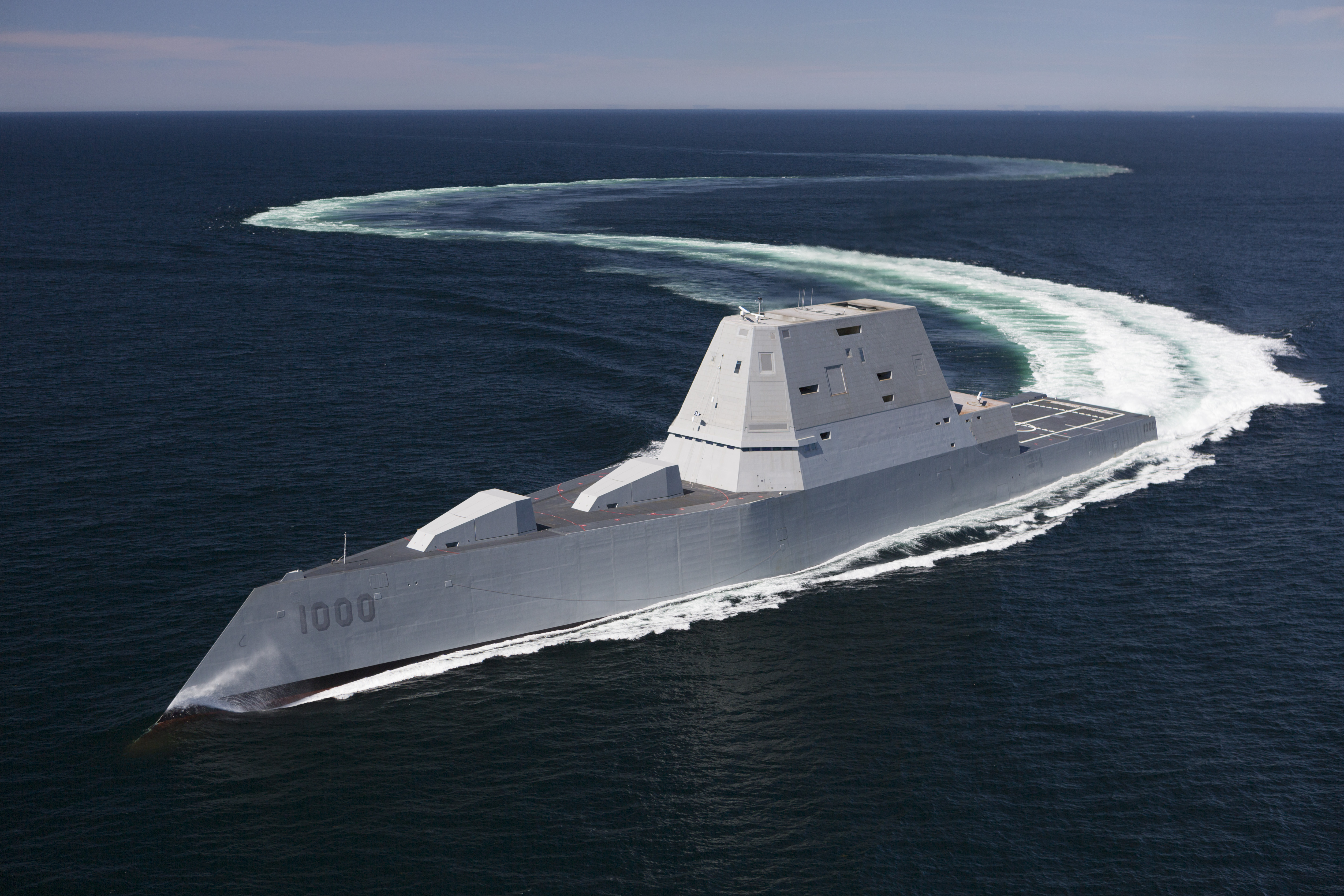

Though the Navy is dancing in the end zone over its newest destroyer, the USS Zumwalt (DDG 1000), the futuristic ship has already lost one of the major pieces of its arsenal.
To be more precise, the 155mm Advanced Gun Systems will need a new round to fire.

The future guided-missile destroyer USS Zumwalt (DDG 1000) transits the Atlantic Ocean during acceptance trials April 21, 2016 with the Navy’s Board of Inspection and Survey (INSURV). The U.S. Navy accepted delivery of DDG 1000, the future guided-missile destroyer USS Zumwalt (DDG 1000). Following a crew certification period and October commissioning ceremony in Baltimore, Zumwalt will transit to its homeport in San Diego for a Post Delivery Availability and Mission Systems Activation. DDG 1000 is the lead ship of the Zumwalt-class destroyers, next-generation, multi-mission surface combatants, tailored for land attack and littoral dominance. (U.S. Navy/Released)
According to a report by Popular Mechanics, the Navy has cancelled the Long Range Land Attack Projectile (LRLAP). This round, guided by GPS satellites, was to have been used to hit targets as far away as 60 miles. One of the biggest issues came about because of the cut in the buy of the Zumwalt – from 32 ships to only three. The Daily Caller noted that cutting the size of the Zumwalt buy caused the per-unit cost to go up from $4.1 billion to $7 billion. That meant that the cost per shell went up to $800,000, largely because the RD cost is being borne by far fewer rounds than originally thought. As a result, the program met the Pentagon chopping block.
Read More: Add Zumwalt Class to list of new Navy ships having engineering problems
Now, this does not mean that the Zumwalt’s AGS is reduced to an ornament. The good news about the 155 round is that there are a host of options aside from the proverbial spitballs. Here are a few:
M107 High-Explosive: This is a conventional round – but there are a lot of them in stock, and it can still do a lot of damage. The M549 adds rocket assistance to increase range. Newer shells like the XM1113 and XM1128 will provide longer range and near-precision capability.
M864 Dual-Purpose Improved Conventional Munitions (DPICM): Think of this as a very small cluster bomb. The bomblets can take out armor or infantry, and it allows room for error. On a ship, these rounds could do a lot of damage to exposed antennas for radars and radios.
M712 “Copperhead”: This is a laser-guided artillery round. And a lot of UAVs have laser designators, including the MQ-8 Fire Scout (which can be operated off ships). While intended for land use, it should be noted that the Navy has used laser-guided weapons at sea, notably AGM-123 Skippers against the Iranian frigate Sahand during Operation Praying Mantis.

The M982 Excalibur 155mm round leaves the barrel of an M777 Howitzer during a live fire shoot conducted by Soldiers of the 4th Battalion, 27th Field Artillery Regiment, 2nd Brigade Combat Team, 1st Armored Division, at Oro Grande Range Complex, N.M., Dec. 5. The shoot was the first of its kind conducted outside of the National Training Center, Fort Irwin, Calif., and combat. (US Army photo by Sgt. Sean Harriman, 2nd BCT, 1st AD, Public Affairs)
M982 “Excalibur”: This is a GPS guided shell already in service with the Army. Costing $68,000 a shell, it doesn’t have the range that LRLAP would have brought to the table, but it is combat-proven in Iraq and Afghanistan.

Vulcano: The Vulcano from OTO Melara uses infra-red guidance to hit its targets at ranges of about 50 miles. The Italian firm offers this shell in 76mm and 127mm versions as well as its 155mm version. Laser guidance is also an option for these shells. Vulcano might be a better bargain than LRLAP, since it is also capable of being used as an anti-ship weapon.
